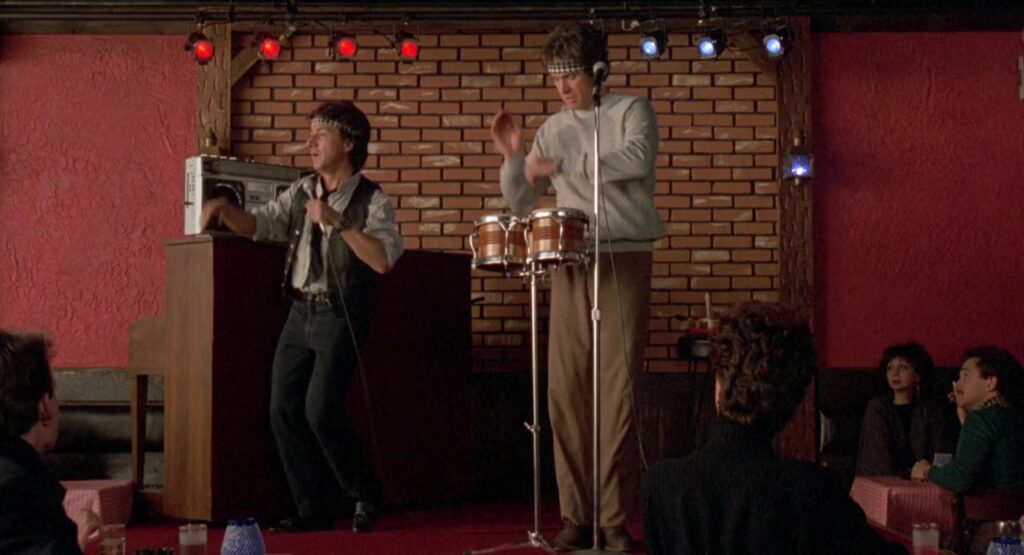
By now the reputation of Ishtar (1987) is more widely known than the film is seen. The narrative of that reputation has changed over the intervening decades from one of artistic catastrophe to one of unheralded triumph. The writer and director of Ishtar, Elaine May, has also undergone a similar metamorphosis since Ishtar‘s release. In the early 21st century Elaine May found herself the critical darling once more as a new generation of cinephiles began to discover her films in the 2010s when the Criterion Collection released her masterpiece Mikey & Nicky (1976) on home video again.
I discovered Ishtar in the early 2000s through the public library as a fan of Charles Grodin and Paul Williams. Ishtar may look like Spies Like Us (1985) but it’s satire of the pop culture machine and American imperialism in the Middle East is far more sophisticated and nuanced. Ishtar is a film that grows on the viewer over time as the film is revisited again and again. Part of this can be accounted for by the fact that Ishtar is probably the funniest American comedy of the eighties but mostly it’s due to Elaine May’s unique methodology.
Just as Elaine May had slowly built her script for Mikey & Nicky around improvised scenes in pre-production with lead actors John Cassavetes and Peter Falk, May again turned to a prolonged pre-production period on Ishtar. However, instead of having Warren Beatty and Dustin Hoffman participate in character building exercises, May opted to have song writing sessions with her leading men and songwriter Paul Williams. The songs in Ishtar aren’t good but always funny. But these songs come from a genuine partnership between Beatty, Hoffman, Williams and May. The songs in Ishtar are goofy yet sincere.
There’s as much masculine vulnerability and friendship in the songs of Rogers & Clarke as there is in the meandering dialogue scenes of Mikey & Nicky. May is an expert at exploring masculine frailties and culture in her films and Ishtar is no exception. May’s early features A New Leaf (1971) and The Heartbreak Kid (1972) examined bachelorhood and the male delusions of independence and sexual prowess. In Mikey & Nicky and Ishtar, May examines male bonds with Mikey & Nicky representing a destructively passionate relationship while Ishtar looks at a dysfunctional yet productive relationship.
The uncomfortable truths behind much of the interactions in both Ishtar and Mickey & Nicky reveal a vulnerability to the male psyche that recasts these films as iterations of the romantic comedy (Ishtar) and the romantic tragedy (Mikey & Nicky). The gender barriers that separate genres are dismantled in the cinema of Elaine May to become wholly inclusive modes of human portraiture and emotional exploration. For Elaine May Rogers & Clarke are as interchangible with Hope and Crosby as they are with Grant and Hepburn.
An issue that many viewers have with Elaine May’s work is that her aesthetic and reflexive operations often relegate female characters to the sidelines as either a functional plot device or a mirror in which a male character can be reflected. While this could be read as a short coming, it’s important to note that May is as invested in dismantling masculine myths in popular culture as she is in degendering genres. Elaine May, with all her wit and silliness, is at heart a transgressive artist whose work as a director subverts even while it seems to conform. Ishtar, which looks and feels like many other eighties comedies, is Elaine May’s most covert act of cinematic subversion.
